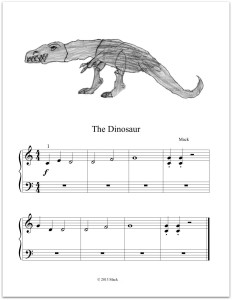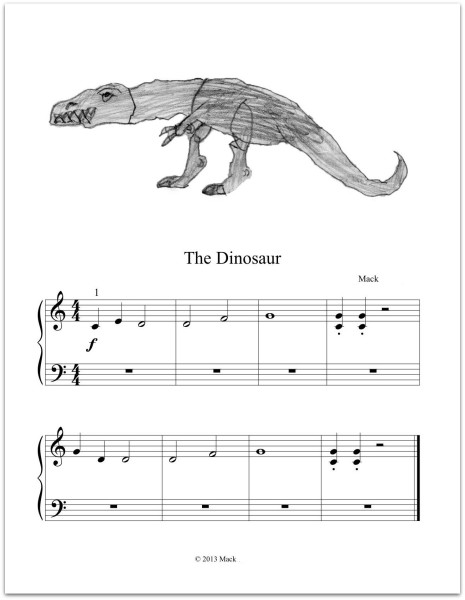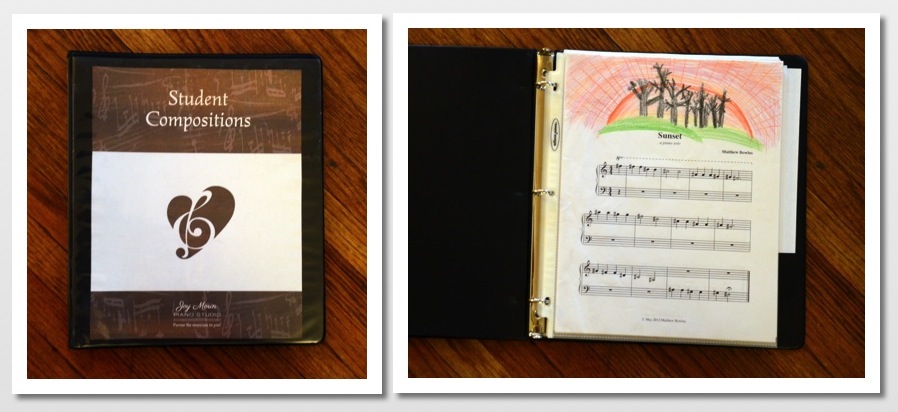 For the past six months, I have been working on a new resource to help piano teachers compose and improvise with their students. I am going to give you the full scoop on the new resource soon, but I wanted to introduce the resource with this article discussing how composition can be used in the private piano lesson. Update: the new “Composition & Improvisation Prompts for Piano” eBook is now available here in the Shop!
For the past six months, I have been working on a new resource to help piano teachers compose and improvise with their students. I am going to give you the full scoop on the new resource soon, but I wanted to introduce the resource with this article discussing how composition can be used in the private piano lesson. Update: the new “Composition & Improvisation Prompts for Piano” eBook is now available here in the Shop!
There are many challenges to having piano students compose. For example, teachers might feel that:
- I don’t have time in the lesson to teach composition.
- I don’t know how to teach composition.
- I don’t know how to give a composition assignment.
- My students don’t understand how to compose a good melody.
- My students are overwhelmed at the idea of composing their own music.
Despite these challenges (yes, I feel them too), I have enjoyed having my students compose their own pieces for many years now. Here is how I incorporate composition in my lessons:
- I do not have every student composing a piece all of the time. We do it now-and-then, as a temporary replacement or an addition to the theory assignment.
- Some students do not enjoy composition. I don’t compose very often with those students.
- Some students LOVE composition! I compose often with those students.
Most students need a lot of help with their first composition. After that, the process becomes easier as the student becomes more independent.
Getting started is the hardest part. Most students will become completely overwhelmed and paralyzed if you tell them, “Start composing your own piece this week.” This problem occurs when the assignment is too broad, giving the student no idea for how to start. (Stay tuned to hear more about my solution to this problem when I announce my new resource mentioned earlier.) Update: the new “Composition & Improvisation Prompts for Piano” eBook is now available here in the Shop!
Once the student has the piece started, things become easier.
We usually only spent 3-5 minutes during the lesson on the composition. At the lesson, I check over their work, answer any questions, and perhaps make a suggestion for what to work on next. Most of the work is completed at home.
Each week, students add a few measures. I allow students write out the composition using their own invented notation at first if desired. Most students use traditional staff paper.
At the lesson, I admire their work and offer suggestions. I don’t dictate the composition: I instead offer options and let them decide. I suggest that we figure out the time signature and add barlines. I suggest that we should let the performer know what fingering and dynamics they should use, and whether the melody should be staccato or legato. I suggest that we use AB or ABA form, or that they compose a through-composed piece that tells a story.
Pieces can be very short. A good rule of thumb is to allow students to compose pieces that are comparable in length and difficulty to their current playing level or one level below that.
When the piece is finished, I borrow the paper(s) and input the piece into Finale. Older students can notate their pieces themselves using the free Finale Notepad or something similar. I also assign students to draw their own illustrations. Later, I scan the illustration and put the picture file directly into Finale. Then, I save the Finale file as a pdf and email it to parents to keep.
Sometimes, I record the student playing their piece on the piano.
Here is an example of a piece my student composed and illustrated:

On the coffee table in my living room / waiting room area, I have a binder of student compositions on display for parents/students to admire.

There are many benefits to having students compose their own pieces, even when the outcome does not sound like Mozart. 🙂 Composing music is a great way for students to bring more creativity to their music study. Through the composing process, students gain a greater appreciation for the work of composers. They also learn the rules of notation and the elements of a good composition. My favorite part is seeing their individuality shine through their compositions!



I love the picture idea. I didn’t know you can scan and input it into Finale. How do you do that?
The “Graphics” tool allows you to import any jpg or png file into a Finale document. On my Mac version, I select the Graphics Tool from the menu of tools along the left. Then in the upper menu, I select Graphics > Place Graphic. Then I chose the image file from my hard drive, and click on the document wherever I’d like to place the image.
Getting to the Graphics tool is a little bit different on a PC versus a Mac. Those of you who have a PC will need to check the Help > User Manual to see how to access the Graphics tool.
By the way, the Graphics tool is the same tool that allows you to create tiff image files (essentially screenshots, but better because they are clearer and show up with black notes on a pure white background) which you can then use in Microsoft Word documents. It’s a handy tool!
Awesome, thanks for the tips and instructions! 🙂
I have no formal training in composition, but being a classroom teacher and teaching reading and writing together causes me to value expressing music along with interpreting it. So now I do try to teach composition, but unfortunately I feel that I have very little to contribute, since I would like to learn how to compose for myself. My “lesson” on composition usually start out thinking of an animal, and then thinking of what that animal looks like and how it moves and what it does during the day/night. Then we think about how that might sound. I have used Carnival of the Animals as examples, and also Peter and the Wolf. Another strategy that I have used is to make up a story with a beginning, middle and end, and write musical phrases that go with each section. I have had limited success. In one case, a student (4th grader) wrote music for the end of “The Boy Who Cried Wolf” (the boy escaped). In another case, a 10 year old boy wrote music for the beginning, middle, and end of The Hobbit. We don’t worry about writing it in musical notation at first (unless they are comfortable doing that). Especially if they are new to the piano, I encourage them to memorize their pattern/melody during the week and play it for me next time. Then I have them play it during the lesson, and I transcribe, but only with letters, not musical notation, and other marks like “lowest A on the piano” or “start on middle D.” I focus a lot on “how do you want the music to sound” and on using patterns in different ways (higher, lower, using a black key instead of a white key, etc.) to explore the possibilities. But what I really wish I had was the knowledge of more formal composition, not because I want to constrict them into being lifelong conformists, but because understanding composition gives you more tools for your composing repertoire. One of my students (the Hobbit) actually took the initiative to find a iPad app and notate the music himself. Very cool!
Which ipad app did your student find to use?
Also, I have had very little experience with Finale, but I do use a program called Mozart. It has a function of saving the pages as jpgs or other picture formats, so you can insert it into a word file along with any other clipart, titles, etc.
I focused on composition with my students last year, in many of the ways you are writing about. The students performed their final composition at the last recital of the year. They displayed their artwork and music to the audience prior to playing. In 20+ years of student recitals, this was BY FAR the best student recital I’ve ever had! The feedback from the parents was incredible-most of them wanting to do this every year. I HIGHLY recommend implementing this idea into your studios if you’re not doing it already.
Another free notation program is Musescore. Many of my students use it, but I haven’t, as I also have Finale.
That is awesome, Laura! I am thinking about having a composition recital this year in the Spring. We’ll see!
Thanks for sharing! I like how there are accompanying pictures. Pictures add a lot more feeling when you’re flipping through the pieces.
Thanks, Grace!